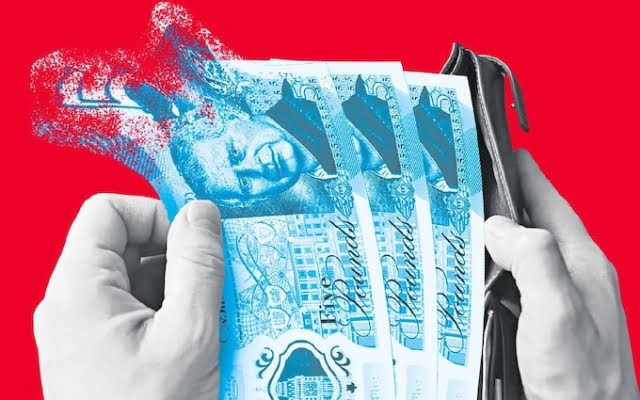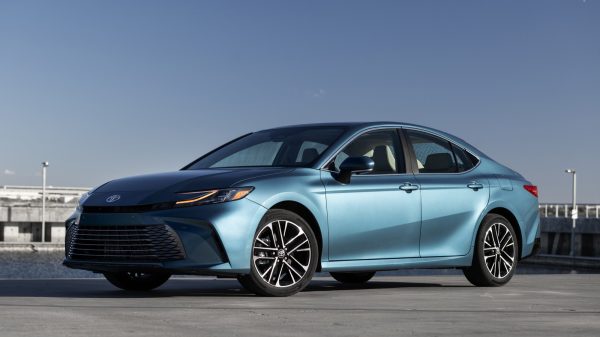
In mid-2024, King Charles III will become the second monarch whose portrait will be issued on British banknotes. It is quite possible that his image will be the last on a banknote that has ever been used.
The use of cash is collapsing around the world. De La Rue, the firm that designs a third of the world's banknotes, says global demand for physical currency has hit a 20-year low. Payments by cards, mobile devices and digital wallets are rapidly replacing traditional payment methods.
According to the financial company FIS, global cash transactions fell from $11.6 trillion between 2018 and 2022 (9. 3 trillion pounds sterling) to 7.7 trillion US dollars, i.e. by a third.
Last year, cash transactions accounted for just 16% of transactions worldwide. FIS predicts that by 2026, global cash transactions will be worth just $6 trillion, representing only one in 10 payments.
The UK is ahead of the competition in this metric, with cash already counted last year. only for a tenth of transactions at the point of sale.
According to UK Finance, the lenders' trade organization, cash payments will fall another 52% in the 10 years to 2031. Debit card payments, which have already become the dominant payment method, will grow by almost a quarter during this time.
1304 Cash is no longer the main thing
“We need to start preparing for a very, very low cash society,” says John Howells, chief executive of Link, the UK ATM network.
falling fast and it will continue. I think in 15 or 20 years it could practically disappear.”
He estimates that cash will probably be used for one in 20 payments by the end of the 2020s.
< p>Cash will still exist physically because it will be an insurance policy if the network fails, Howells says. Most likely, people will keep notes, but they will not be used.
Blocks have accelerated an already rapidly developing trend. “The pandemic hastened the disappearance of cash by four to six years,” says Hugh van Steenis, vice chairman of consultancy Oliver Wyman and author of the 2019 Bank of England Future of Finance report.
The speed of change however presents looming risks. “Politicians need to create a roadmap to reduce cash by improving infrastructure, including coordination with broadband and mobile networks,” van Steenis warns.
The move away from cash introduces new vulnerabilities, for example through heavy reliance on mobile and broadband networks. In 2019, the Swedish government issued guidance advising people to keep cash in case of cyberattacks, power outages or war. It was a warning that became even more relevant after the Russian invasion of Ukraine.
“We need a physical backup in case the digital systems fail. Every once in a while they fail and that causes havoc,” says Howells. But keeping cash as a fallback doesn't mean it won't completely disappear from everyday use.
1304 Share of cash transactions
The UK may be ahead of the global curve, but its transition pales in comparison to Scandinavia: Norway uses the least cash in Europe, covering just 4% of transactions at the country's point of sale.
“Electronic payments are everywhere. If I go skiing in the woods and go to a secluded cafe to eat waffles 20 km from civilization, I will not take cash with me, except for a mobile or credit card. I literally haven't touched cash for five years in this country,” says Martin Schmalz, professor of finance and economics at Oxford University's Saeed School of Business, who lives in Norway.
Transactions are faster, easier, and less open to abuse incentives for entrepreneurship and economic activity, says Schmalz. The digital transition also undermines black markets and opportunities for tax evasion, but raises additional privacy concerns.
This is one of the reasons why Germany is the European country that has so far been the slowest to transition. from cash.
“Germans are known to care about privacy and don’t like [digital transactions],” says Schmalz. On the contrary, Scandinavians have a high level of trust in their governments. They also have the best digital access.
“Scandinavia has the lowest offline user rate in the world. In Germany, the rate is 16 pcs. In Scandinavia it is about 1%,” says Schmalz.
The move away from cash isn't just about the Internet, and emerging economies are often the leaders. The seeds of popular mobile payments as we know them today emerged in 2007 with M-Pesa, a Kenyan money transfer service, long before smartphones became ubiquitous.
Since then, technology has advanced sky-high heights. Ethiopia received its first national mobile money service in 2021. Within a week it had a million users. Today there are about 30 million.
According to the forthcoming GSMA Mobile Industry Report, between 2021 and 2022, the number of registered mobile money accounts worldwide increased by 250 million to reach 1.6 billion Money.
«We are seeing double-digit growth the number of registered accounts, the number of active accounts, transactions and the amount of transactions,” says Max Cuvelier, Head of Mobile Development at the GSMA, which represents mobile operators worldwide.< /p> 1304 Number of ATMs
While digitalization is primarily a matter of convenience for the people of the UK, in most African countries it provides a vital safety net, he adds.
“The situation that gave birth to M-Pesa was is that in the countryside, small farmers would go once or twice a week to the biggest market, and when they came back from the market, they were robbed because the thieves knew that they would return the cash,” Cuvelier says.
Now they can just send cash back virtually. The introduction of the payment system also gave people immediate access to bank accounts, loans and insurance.
Digital wallets dominate the Asia-Pacific region. In 2018, payment methods that store user information in the cloud accounted for 3% of transactions by value in the Asia Pacific region (excluding China), according to FIS. By 2026, this share will increase by 11 times and amount to 34 percent.
According to FIS, in 2022 in China, cash was used for only 8 percent of transactions at service points. By 2026, this figure will be reduced to 5 percent.
As digital payments boom, the cash infrastructure is declining. The number of ATMs in the UK has been steadily declining for over 15 years. Link says there are 49,893 ATMs today, down 22% from 2007. Barclays has just announced that it will close 15 more high street branches as they are underused. This brings the total number of planned closures this year to 73.
This transition will be a blow to the five million cash dependent people in the UK.
This group is heavily concentrated among people living on lower incomes, says Rachel Statham, Associate Director for Work and the Welfare State at the Institute for Public Policy Research, a think tank.
There is also a looming risk of a widening gap between those who have access to digital payments and those who do not.
Howells says the ATM infrastructure will never disappear, and access to cash will always be limited. for free. “But there will be a problem where you can spend them. It's just not likely that we can get retailers to keep accepting cash for the next 10 or 15 years,» he says.






















































Свежие комментарии